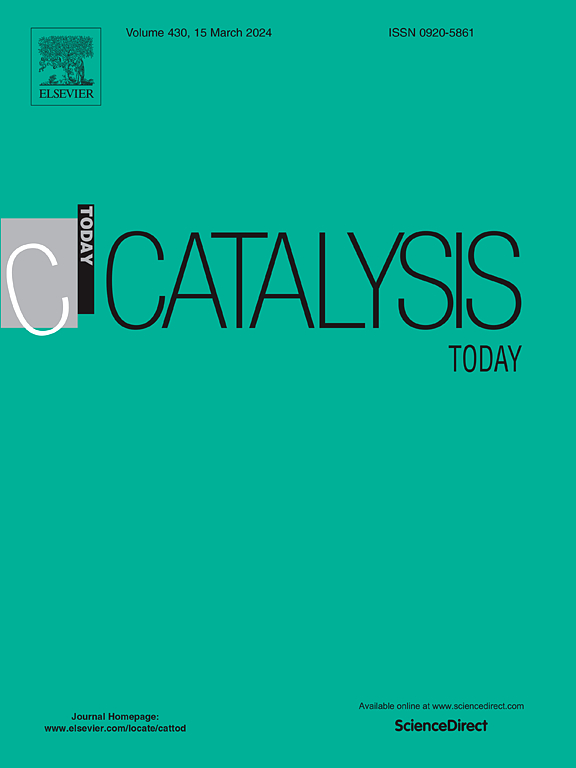TiO2-Ag nanostructured photocatalyst for viral inactivation: A preliminary study using protein models
IF 5.2
2区 化学
Q1 CHEMISTRY, APPLIED
引用次数: 0
Abstract
The rapid emergence of viral infections, such as SARS-CoV-2, underscores the urgent need for innovative antiviral strategies. This study explores the photocatalytic effectiveness of synthesized mesoporous mTiO2-Ag nanostructures in denaturing viral proteins, thereby inhibiting viral spread. Utilizing protein models, specifically bovine serum albumin (BSA) and the spike protein subunit S1 (S1SP) of SARS-CoV-2, we evaluated the nanocomposite's ability to degrade high molecular weight proteins, simulating the interactions between photocatalysts and viral proteins. Our findings indicate that the mTiO2-Ag nanocomposite exhibits enhanced photocatalytic performance, effectively disrupting viral structures through reactive oxygen species (ROS) generation and physical interactions. This approach not only provides insights into the mechanisms of viral inactivation, pointing out the effect of photocatalytically generated ROS, as •OH, but also offers a safe alternative for assessing the antiviral properties of nanomaterials without the need for handling pathogenic viruses. The results support the potential application of photocatalytic nanomaterials in disinfection strategies, promoting safer and more effective solutions for controlling viral infections in various environments.
用于病毒灭活的TiO2-Ag纳米结构光催化剂:蛋白质模型的初步研究
SARS-CoV-2等病毒感染的迅速出现,突显出迫切需要创新的抗病毒策略。本研究探讨了合成的介孔mTiO2-Ag纳米结构在变性病毒蛋白中的光催化效果,从而抑制病毒的传播。利用蛋白质模型,特别是牛血清白蛋白(BSA)和SARS-CoV-2的刺突蛋白亚基S1 (S1SP),我们评估了纳米复合材料降解高分子量蛋白质的能力,模拟光催化剂与病毒蛋白之间的相互作用。我们的研究结果表明,mTiO2-Ag纳米复合材料具有增强的光催化性能,通过活性氧(ROS)的产生和物理相互作用有效地破坏病毒结构。该方法不仅提供了对病毒失活机制的见解,指出了光催化产生的ROS(如•OH)的作用,而且还提供了一种安全的替代方法,无需处理致病病毒即可评估纳米材料的抗病毒特性。这些结果支持光催化纳米材料在消毒策略中的潜在应用,促进在各种环境中更安全、更有效地控制病毒感染的解决方案。
本文章由计算机程序翻译,如有差异,请以英文原文为准。
求助全文
约1分钟内获得全文
求助全文
来源期刊

Catalysis Today
化学-工程:化工
CiteScore
11.50
自引率
3.80%
发文量
573
审稿时长
2.9 months
期刊介绍:
Catalysis Today focuses on the rapid publication of original invited papers devoted to currently important topics in catalysis and related subjects. The journal only publishes special issues (Proposing a Catalysis Today Special Issue), each of which is supervised by Guest Editors who recruit individual papers and oversee the peer review process. Catalysis Today offers researchers in the field of catalysis in-depth overviews of topical issues.
Both fundamental and applied aspects of catalysis are covered. Subjects such as catalysis of immobilized organometallic and biocatalytic systems are welcome. Subjects related to catalysis such as experimental techniques, adsorption, process technology, synthesis, in situ characterization, computational, theoretical modeling, imaging and others are included if there is a clear relationship to catalysis.
 求助内容:
求助内容: 应助结果提醒方式:
应助结果提醒方式:


